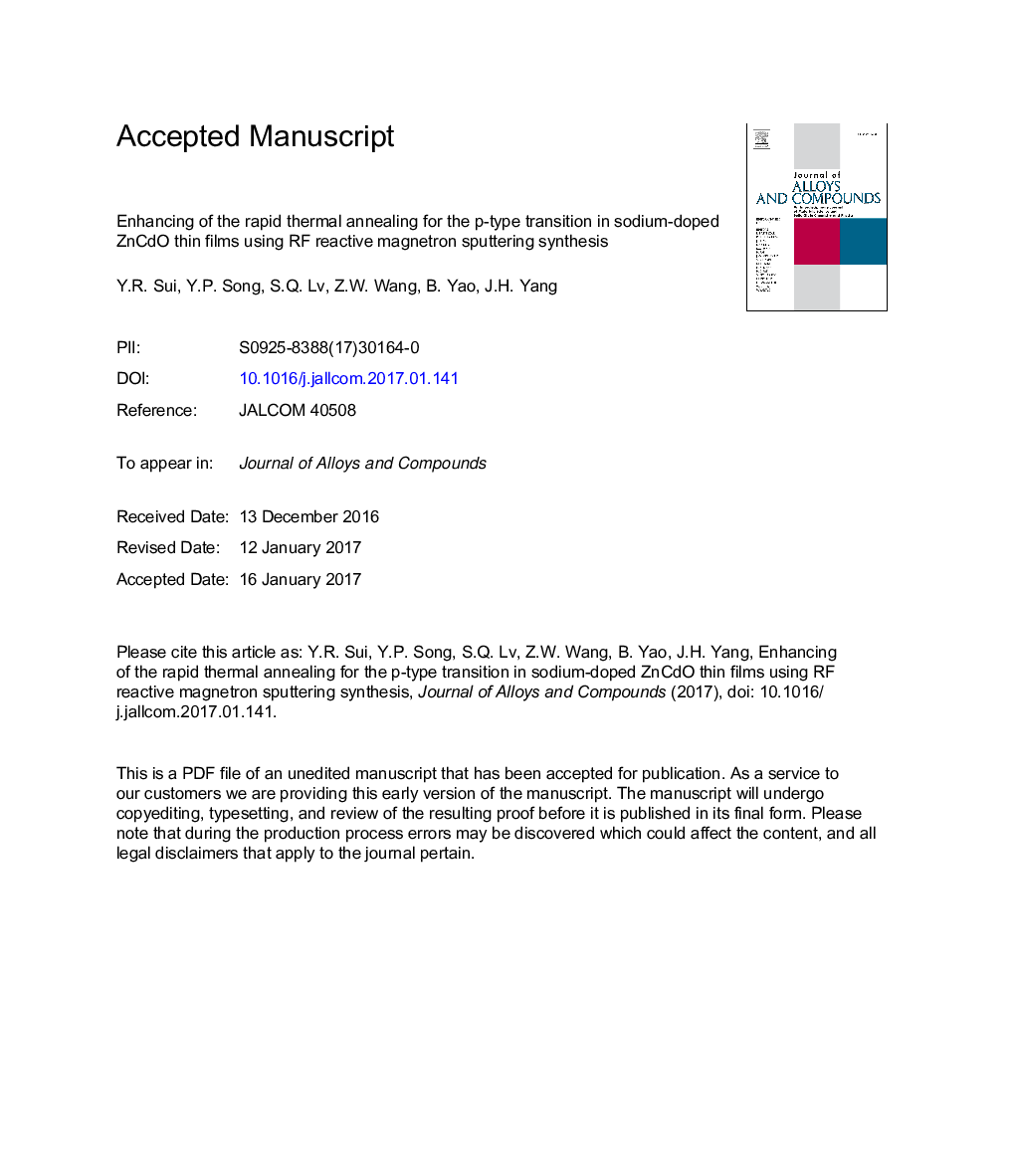| Article ID | Journal | Published Year | Pages | File Type |
|---|---|---|---|---|
| 5460248 | Journal of Alloys and Compounds | 2017 | 36 Pages |
Abstract
Sodium-doped ZnCdO films (ZCO:Na) were grown on quartz substrates by radio frequency (RF) reactive magnetron sputtering followed by rapid annealing technique. Hall measurements results underscore the importance of annealing temperature (Tann) and annealing time (tann) in obtaining p-type ZCO:Na film. It is found that the recipe to acquiring p-type ZCO:Na film is drive out Nai and Hi while preserving Na at the substitutional sites, which can be realized through managing the dissociation of Na-relevant neutral complexes under appropriate Tann and tann. The optimal p-type ZCO:Na film (sample D) was obtained when the Tann and tann were set to 600 °C and 30 min, respectively, which possesses a carrier concentration of 2.98 Ã 1017 cmâ3, a mobility of 0.225 cm2Vâ1sâ1 and a resistivity of 95.9 Ω cm. XPS results revealed the chemical bonding states of elements in ZCO:Na film. Combining the results of XRD, TEM and XPS, it is demonstrated that the substitution of some Zn sites by Cd and Na atoms (CdZn and NaZn) takes place in ZCO:Na film. It is observed from absorption spectrum that the band gaps of all ZCO:Na films are smaller than that (3.37 eV) of pure ZnO film. Sample D has a relatively narrow band gap (Eg) of 3.05 eV, which led to the decrease of the activation energy of NaZn or other defect acceptor states, exhibiting advantages to realize the p-type conduction conversion in ZCO:Na film. Our results show that the sputtering followed by rapid annealing synthesis route of ZCO:Na film is a promising solution toward obtaining p-type conductivity for future device applications.
Related Topics
Physical Sciences and Engineering
Materials Science
Metals and Alloys
Authors
Y.R. Sui, Y.P. Song, S.Q. Lv, Z.W. Wang, B. Yao, J.H. Yang,
